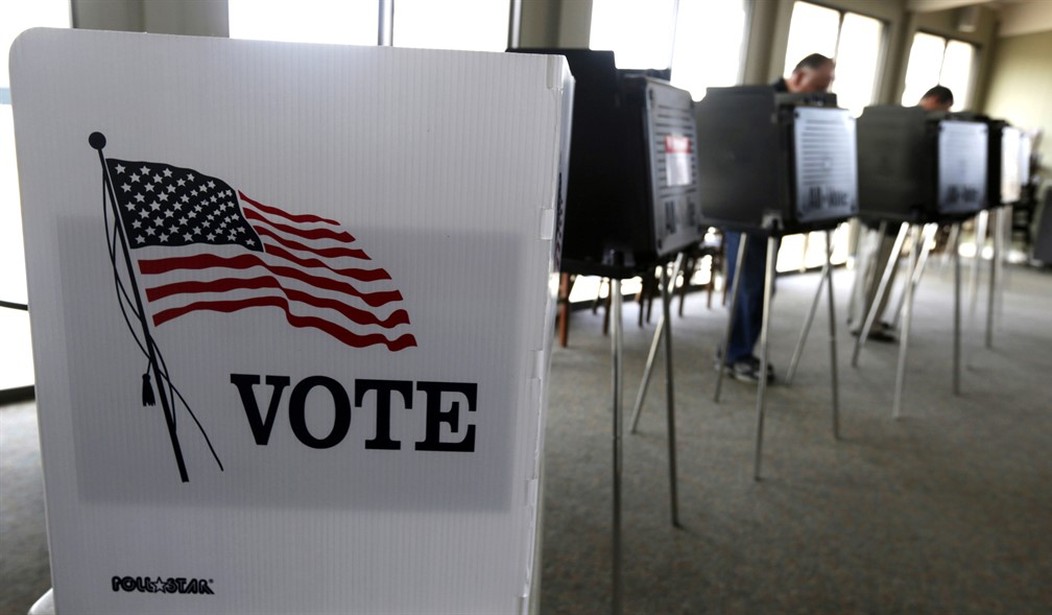My thesis is that changes in states' voting behavior can best be explained by surges of migration over the past generation -- not just immigration, a subject of obvious interest this campaign season, but even more of internal migration within the United States.
The overall picture is one of Republican decline, from the 53 percent George H.W. Bush won in 1988 to Mitt Romney's 47 percent in 2012. But the decline was not uniform.
In 14 states with 201 electoral votes the Republican percentage dropped by double digits. In 20 states with 161 electoral votes the Republican percentage increased or dropped by less than 3 percent. In 16 states and D.C. with 176 electoral votes it dropped by about the national average. (Comparing Democratic percentages produces almost identical results, since minor candidates got only 1 or 2 percent in those two elections.)
The double-digit Republican drops in California, Illinois, New York, New Jersey and Connecticut are often attributed to high Hispanic and Asian immigration. But they're also the result of huge domestic out-migration of middle-class people due to high taxes and high-cost housing.
From the 1940s to the 1970s California tilted Republican because of vast numbers of newcomers from the Midwest. Starting in the 1980s it became strongly Democratic not only because of vast influxes from Mexico but also because many of the offspring of Midwestern migrants moved out.
Recommended
More than 1 million descendants of Irish, Italian and Jewish immigrants from the three-state region around New York City and from metro Philadelphia have moved south along Interstate 95. That migration has left those metro areas, competitive in 1988, solidly Democratic.
And those internal migrants have made Virginia and Florida, and to a lesser extent the Carolinas and Georgia, more Democratic. Virginia, solidly Republican in the 1980s, voted at the national average in the Obama elections and has tilted more Democratic this year. North Carolina, competitive in the last two elections, is so again.
It also matters who moves in. The two largest states, California and Texas, have identical Hispanic percentages. California, while losing middle-income whites, is gaining high-education liberals, while Texas' huge domestic in-migration is culturally and economically conservative. As a result California is safe Democratic and Texas safe Republican. In 2014 gubernatorial races, Texas Hispanics voted about as Republican as California whites.
States that have had little or no domestic in-migration and low immigration mostly trended Republican from 1988 to 2012: in the Appalachian chain; southwest from West Virginia through Arkansas and Oklahoma; in most of the Great Plains and northern Rocky Mountain states; and in heavily Germano-Scandinavian Wisconsin and Minnesota.
Trends in some states may be surprising. Maryland, with heavy black in-migration from Washington, D.C., has moved from marginal to safe Democratic. Massachusetts, after 1990s tax cuts, has had low out-migration, and its Democratic trend is only about the national average.
The largest move to Democrats, 20 percent, was in Vermont, where many New Yorkers like Bernie Sanders have replaced flinty New England farmers, with similar trends in western New Hampshire and the Berkshires in Massachusetts. Mississippi, unlike the rest of the interior South, has trended Democratic rather than Republican, evidently because of higher black turnout.
Increasing Hispanic and Asian populations in large metro areas' suburbs, together with greater cultural liberalism among high-education whites, transformed many of them from Republican to Democratic by 2012, a trend likely to be augmented by Donald Trump's unpopularity among these groups.
But Trump's appeal to low-education and older whites seems to be putting him ahead in places where the elder Bush trailed badly in 1988 -- in West Virginia, western Pennsylvania, Ohio and Iowa (Michael Dukakis' second-best state then). Trump is also doing well in Nevada, which with its many Hispanic and Filipino immigrants trended 13 points Democratic in 1988-2012, because he's running ahead among its many white non-college-graduates.
The biggest puzzle is, no surprise, Florida -- a must-win for both candidates. The recent Puerto Rican influx in metro Orlando helps Democrats. But domestic migrants from the Northeast were Trump's strongest supporters in the primary and could swing its 29 electoral votes to the guy from Queens with a house in Palm Beach.

























Join the conversation as a VIP Member